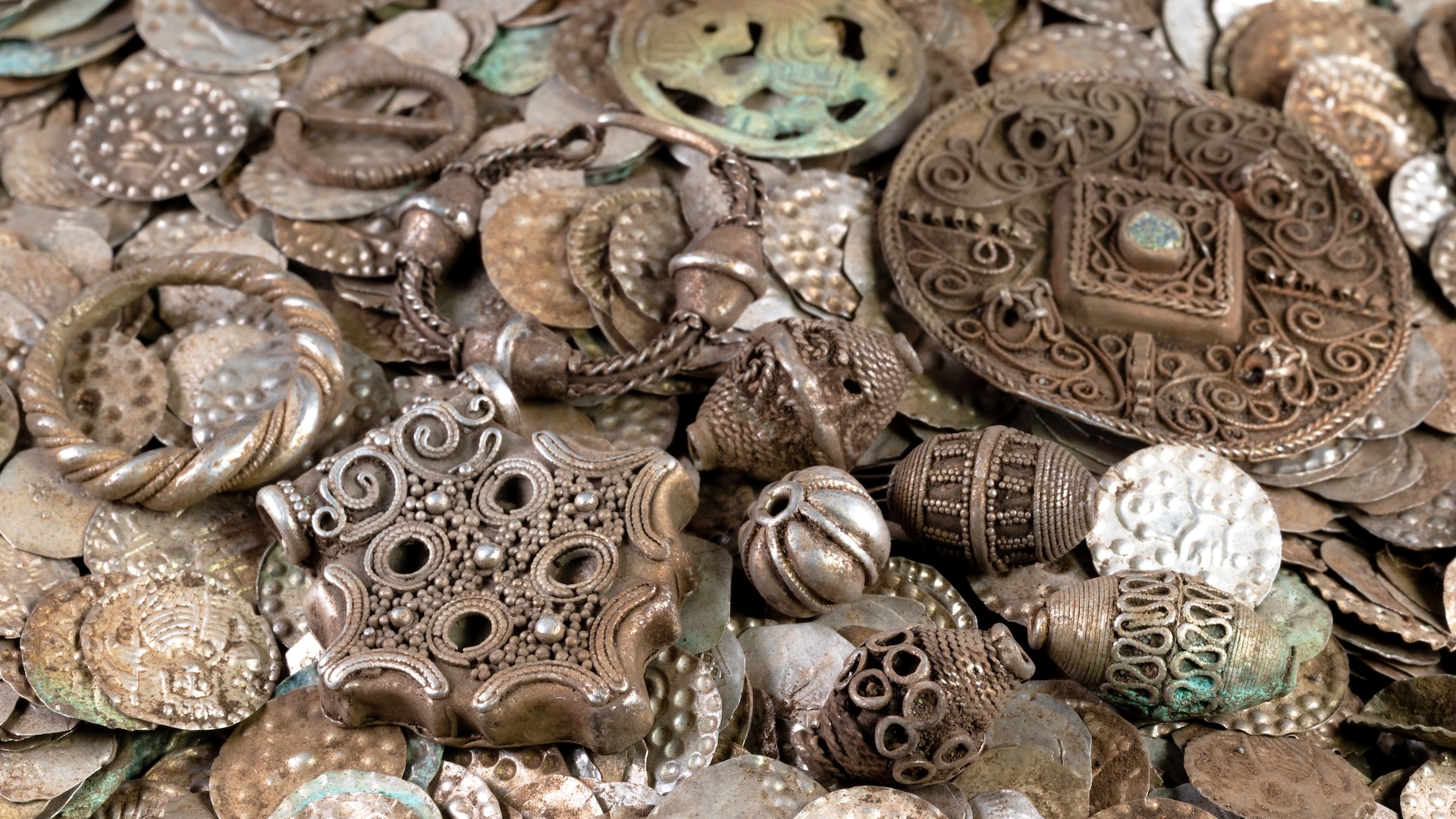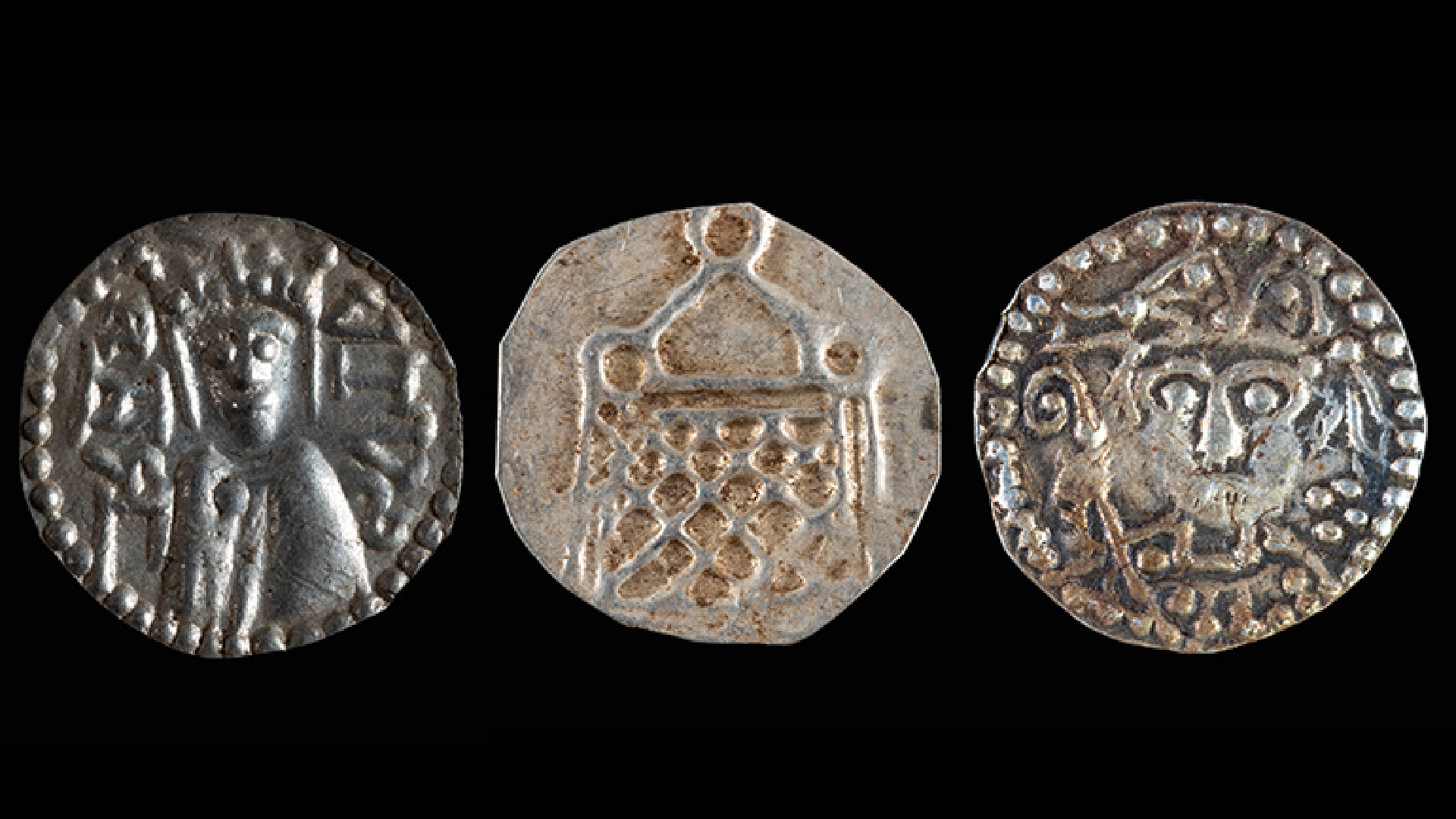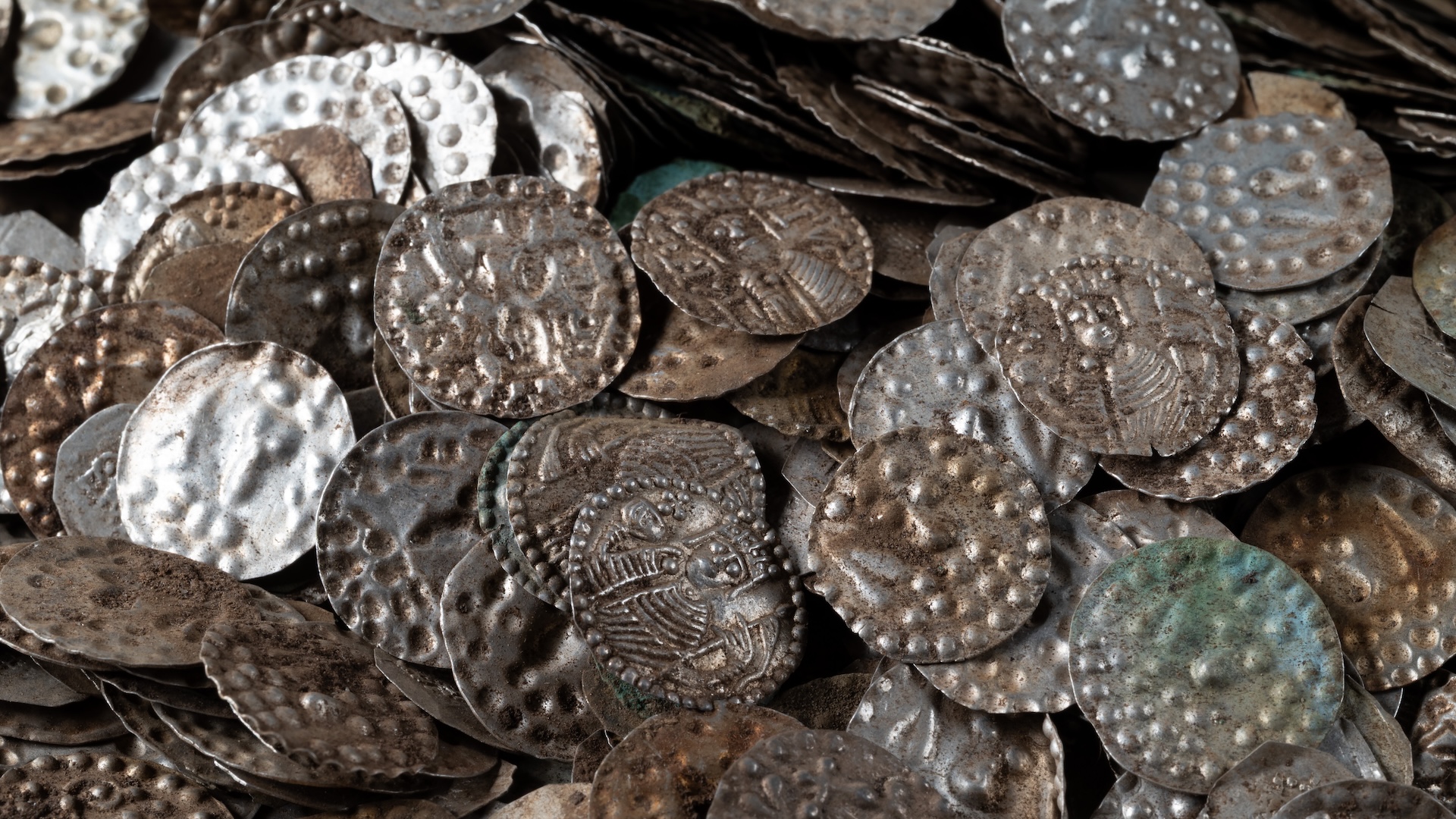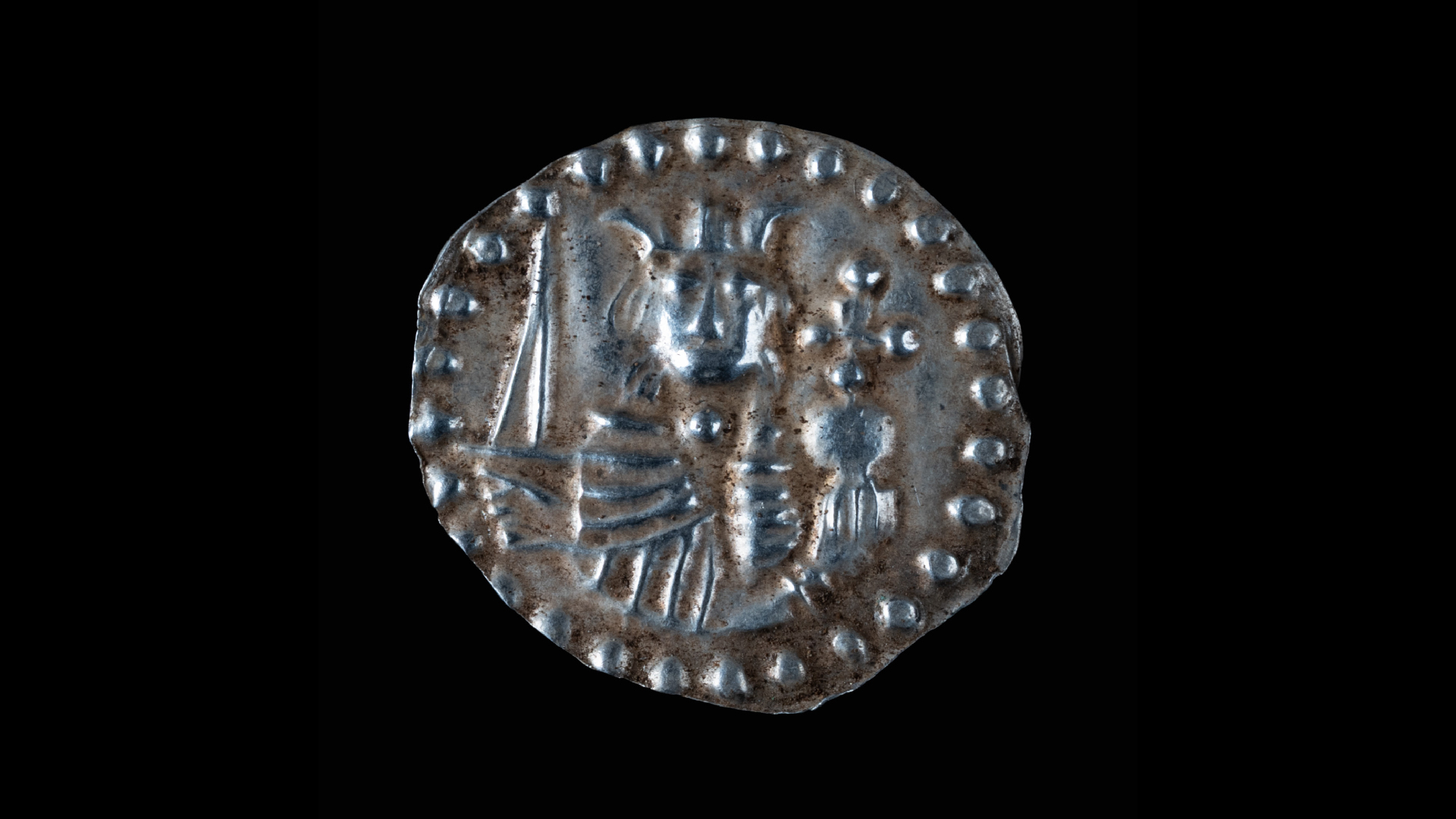Up to 20,000 coins from Early Middle Ages discovered by man digging for worms near Stockholm
A man digging for worms at his summer house in Sweden has unearthed a stupendous treasure: a silver hoard of up to 20,000 coins from the Early Middle Ages.

A man went digging for worms outside Stockholm and made the discovery of a lifetime: a hoard of up to 20,000 silver coins intermingled with beads, pendants and silver rings.
The hoard dates to the Early Middle Ages and weighs about 13 pounds (6 kilograms), according to a translated statement from the Stockholm County Administrative Board.
The worm digger, who found the hoard by his summer house, reported the finding to local government officials. Archaeologists are now examining the treasures, which had been placed in a copper cauldron that has largely degraded over time.
"This is probably one of the largest silver treasures from the early Middle Ages that has been found in Sweden," Sofia Andersson, an antiquarian at the County Administrative Board in Stockholm, said in the statement. "We don't yet know exactly how many coins there are, but I think it could be upwards of twenty thousand."
A preliminary analysis showed that most of the silver coins date to the 12th century. Some bear the text "KANUTUS," the Latin name for Knut, meaning they were minted during the reign of Swedish king Knut Eriksson, who ruled from 1173 to about 1195.
A few of the coins are rare, including several "bishop coins" that were minted by powerful bishops, according to the statement. These coins depict a bishop holding a crosier, a shepherd's crook that was widely used by clergy as a symbol of their ecclesiastical work.
"It is completely unique; we have no other medieval treasures from Stockholm," Lin Annerbäck, director of the Medieval Museum in Stockholm, said in Swedish to the Swedish daily newspaper Dagens Nyheter. "And then it seems to be extremely large too. So it is very exciting."
Get the world’s most fascinating discoveries delivered straight to your inbox.

Three of the silver coins from the hoard, which depict (from left) the 12th-century Swedish king Knut Eriksson, a Gotland coin that may feature a church, and a rare bishop's coin. Notice how the bishop is holding a crosier, a shepherd's crook.

Some of the silver coins are turning green due to oxidation.

A coin featuring King Knut Eriksson, who ruled Sweden from 1173 to about 1195.
Stockholm did not exist at the end of the 12th century, Annerbäck noted; it was officially founded in 1252 by a statesman. It grew to be Sweden's largest city by the end of the 13th century.
As for why the hoard was buried, the end of the 12th century was a "troubled time," because the Swedes were attempting to colonize areas of Finland, Annerbäck said.
"So we believe that many hid treasures like this to keep them in the family's possession," Annerbäck told Dagens Nyheter. "The fact that the silver is mixed with beads and other things makes it seem like it's someone's wealth that has been hidden away."
Research into the hoard is ongoing. The Stockholm County Administrative Board will now report the finding to the National Heritage Board, which will determine if the state will compensate the man who found the hoard.
"The finder acted completely correctly in contacting us at the County Administrative Board," Andersson said. "According to the Cultural Environment Act, anyone who finds an ancient silver find or a deposit find is obliged to offer the state to redeem it for payment."
Editor's note: This story was updated at 6:33 p.m. ET on Oct. 15 to change "pearls" to "beads," which was a Swedish-to-English translation error.

Laura is the managing editor at Live Science. She also runs the archaeology section and the Life's Little Mysteries series. Her work has appeared in The New York Times, Scholastic, Popular Science and Spectrum, a site on autism research. She has won multiple awards from the Society of Professional Journalists and the Washington Newspaper Publishers Association for her reporting at a weekly newspaper near Seattle. Laura holds a bachelor's degree in English literature and psychology from Washington University in St. Louis and a master's degree in science writing from NYU.
You must confirm your public display name before commenting
Please logout and then login again, you will then be prompted to enter your display name.
